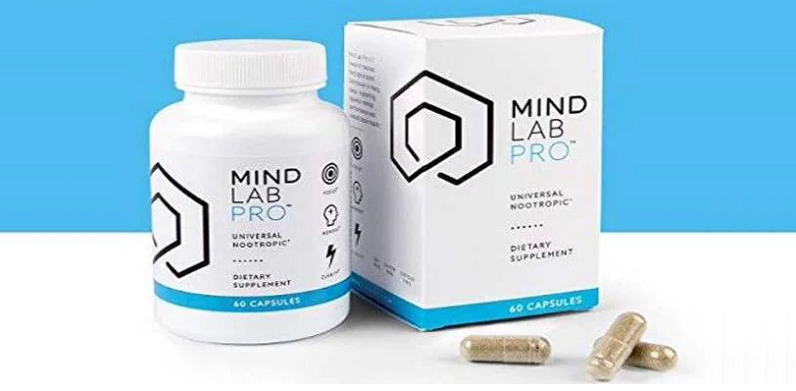
Nootropics, often called “smart drugs” or cognitive enhancers, have gained popularity among students aiming to improve focus, memory, and overall cognitive performance. But for those seeking more tailored and synergistic effects, “stacking” nootropics has become a go-to strategy. By combining two or more nootropics that complement each other, students can potentially achieve greater benefits than by using a single compound alone.
While stacking nootropics can be highly effective, it also requires a deeper understanding of how different substances interact, as well as the potential risks. Here we walk through the essentials of nootropic stacks, from how they work to practical tips for creating a safe and effective stack.
Contents
What Is a Nootropic Stack?
A nootropic stack refers to the combination of two or more cognitive-enhancing substances that work synergistically to achieve specific goals. The idea behind stacking is that by targeting multiple pathways in the brain, you can amplify the benefits of individual nootropics while minimizing potential downsides.
Stacks can be:
- Pre-made: Commercially available blends designed for specific outcomes, such as focus or memory enhancement.
- Custom: Personalized combinations created by users to address their unique needs and goals.
For example, a student looking to stay focused during a long study session might stack caffeine with L-theanine for enhanced concentration without the jitters. Another student preparing for exams might pair Bacopa Monnieri with Lion’s Mane Mushroom to support memory and learning.
Why Stack Nootropics?
The appeal of stacking lies in the ability to customize cognitive enhancement based on individual needs. Here are some reasons why students choose to stack nootropics:
- Targeted Effects: Stacking allows you to address specific goals, such as reducing stress, improving memory, or boosting energy.
- Synergistic Benefits: Some nootropics work better together, amplifying their individual effects. For example, L-theanine enhances caffeine’s benefits while reducing its side effects.
- Comprehensive Support: Stacks can target multiple aspects of brain function simultaneously, providing a well-rounded boost to cognition.
While the potential benefits are significant, it’s crucial to approach stacking with a clear plan and understanding of how different nootropics interact.
Popular Nootropic Stacks for Students
Here are some of the most common and effective nootropic stacks for students:
Caffeine + L-Theanine
This classic stack combines caffeine, a powerful stimulant, with L-theanine, an amino acid found in tea. Together, they create a state of calm focus, reducing caffeine-induced jitters and promoting sustained attention.
- Benefits: Improved focus, reduced anxiety, and steady energy.
- Dosage: Typically 100-200 mg of caffeine with 200-400 mg of L-theanine.
Bacopa Monnieri + Lion’s Mane Mushroom
This stack is ideal for students focused on improving memory and learning. Bacopa Monnieri supports memory retention, while Lion’s Mane promotes neurogenesis, enhancing brain plasticity.
- Benefits: Better memory, long-term cognitive health, and improved learning capacity.
- Dosage: 300-600 mg of Bacopa Monnieri and 500-1000 mg of Lion’s Mane Mushroom daily.
Rhodiola Rosea + Ashwagandha
This adaptogen stack is perfect for managing stress during exam season. Rhodiola Rosea reduces fatigue and enhances focus, while Ashwagandha regulates cortisol levels, promoting calmness.
- Benefits: Stress reduction, better focus, and improved resilience to mental fatigue.
- Dosage: 200-400 mg of Rhodiola Rosea and 300-600 mg of Ashwagandha daily.
Acetyl-L-Carnitine (ALCAR) + Alpha-GPC
This stack enhances energy production and supports acetylcholine, a neurotransmitter critical for memory and learning. It’s an excellent choice for students tackling demanding mental tasks.
- Benefits: Increased mental energy, improved memory, and sharper focus.
- Dosage: 500-1000 mg of ALCAR and 300-600 mg of Alpha-GPC daily.
Tips for Building a Custom Nootropic Stack
If you’re ready to create your own nootropic stack, follow these guidelines:
- Start Simple: Begin with one or two nootropics to understand their individual effects before adding more.
- Research Thoroughly: Learn about each nootropic’s mechanism of action, dosage, and potential side effects.
- Test and Adjust: Monitor your experience and adjust the stack based on your goals and how your body responds.
- Prioritize Quality: Choose high-quality supplements from reputable brands to ensure safety and efficacy.
- Stay Consistent: Some nootropics, like Bacopa Monnieri, require regular use over weeks to show results.
Potential Risks and How to Mitigate Them
While stacking nootropics can offer significant benefits, there are potential risks to be aware of:
- Overstimulation: Combining stimulants like caffeine with other energizing compounds can lead to jitters or anxiety.
- Interactions: Some nootropics may interact with medications or exacerbate existing health conditions. Always consult a healthcare professional if you have concerns.
- Side Effects: Headaches, nausea, or sleep disturbances can occur, particularly if dosages are too high.
To minimize risks, start with low doses, avoid combining too many nootropics at once, and give your body time to adjust.
Stacking nootropics can be a powerful strategy for students looking to optimize their cognitive abilities. By combining complementary compounds, you can target specific goals like enhanced focus, improved memory, and reduced stress. However, success with nootropic stacks depends on careful planning, thorough research, and responsible use.
Whether you’re a first-time user or a seasoned nootropic enthusiast, always prioritize safety, quality, and consistency. With the right stack and approach, nootropics can be a valuable tool in your academic toolkit, helping you achieve your goals more effectively and efficiently.

